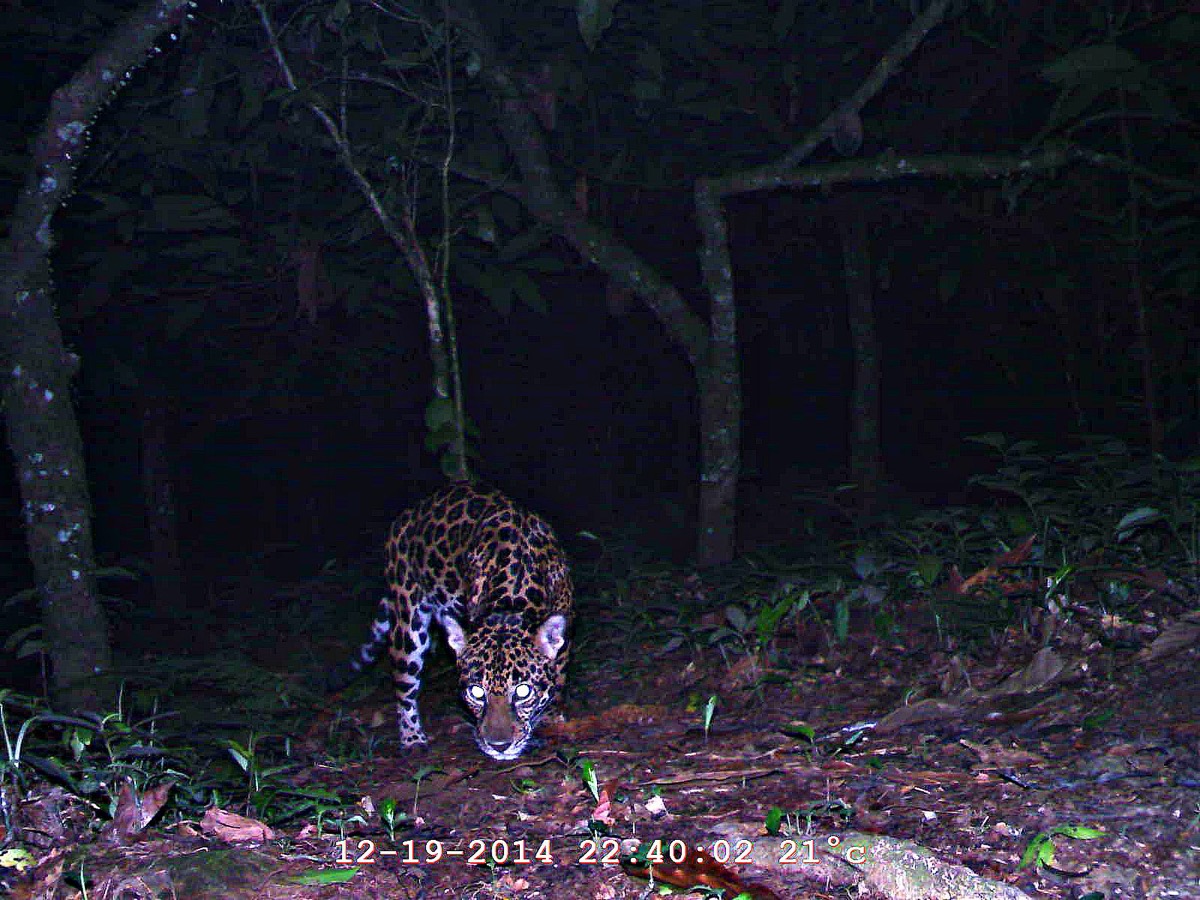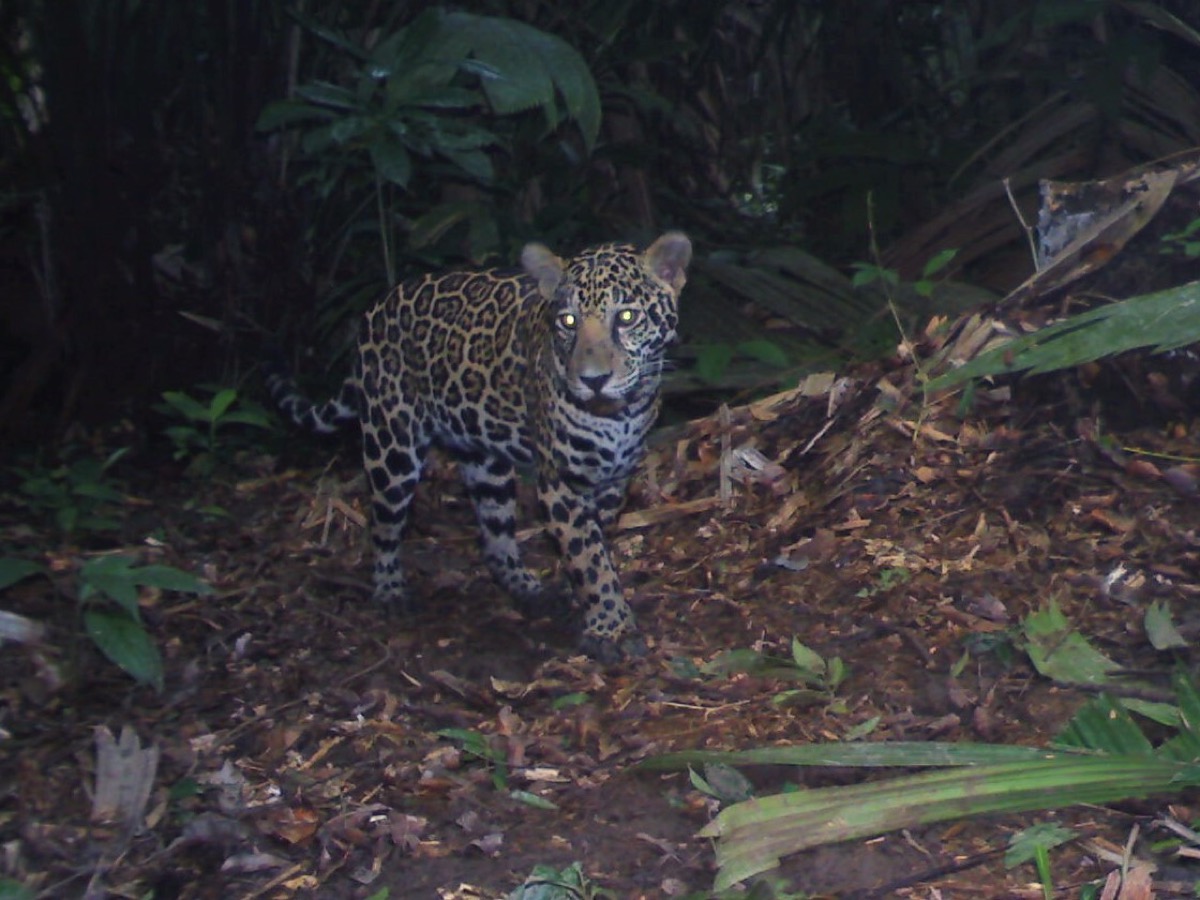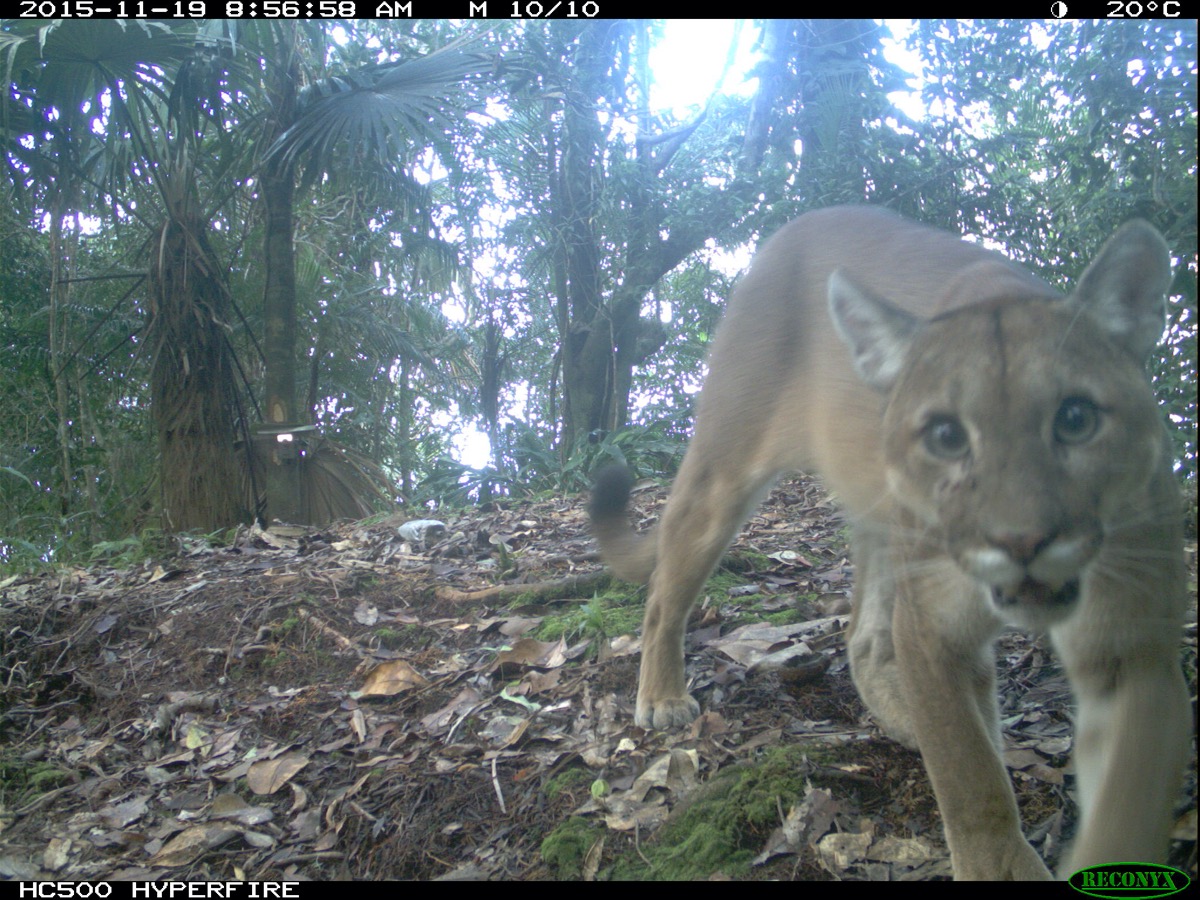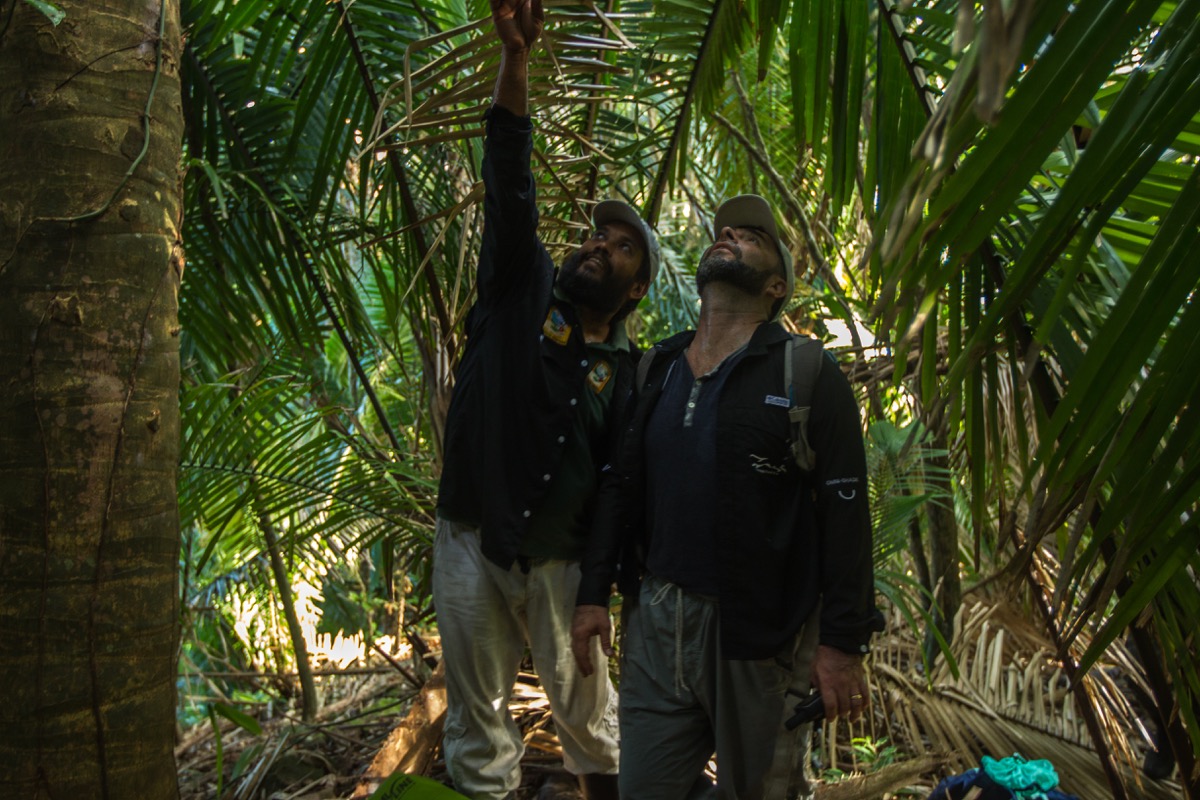SciFri Soundscape: Justice In The Jungle
1:45 minutes

In Central America, jaguar poaching is a big issue. The sounds of bullets and barking dogs are telltale signs that poachers are around. In 2017, to combat this issue, wild cat conservation group Panthera set up acoustic monitoring devices in Guatemala and Honduras. These recorders collect the sounds of the forest, so that scientists, with the help of artificial intelligence, can analyze the collected sounds. Wildlife patrols can then target places where poachers have been the most active.
It turns out this strategy has been working: Evidence of poaching has gone way down around these recorders. The forest sounds more as it should–natural.



Invest in quality science journalism by making a donation to Science Friday.
IRA FLATOW: Oh, one last thing– our SciFri soundscape.
[TROPICAL BIRDS AND WILDLIFE]
We’re taking you to Central America, where jaguar poaching is a big issue. The sounds of bullets and barking dogs–
[BARK]
–are telltale signs that poachers are around.
[BARKING]
[GUNSHOT]
In 2017, to combat this issue, wildcat conservation group Panthera set up acoustic monitoring devices in Guatemala and Honduras. These recorders collect the sounds of the forest. Those sounds are what you are hearing now.
[PRIMATE VOCALIZATION]
[FROG CROAKING]
Scientists, with the help of artificial intelligence, analyze the collected audio. They can then send wildlife patrols to places where the poachers have been most active. It turns out, this is working. Evidence of poaching has gone way down around these recorders. And the forest sounds more as it should– natural.
[TROPICAL BIRDS, REPTILES AND WILDLIFE]
That’s about all the time we have. If you missed any part of this program or you would like to hear it again, subscribe to our podcast, or ask your smart speaker to play Science Friday. Of course, you can say hi to us on social media– Facebook, Twitter, Instagram– or email us the old-fashioned, classic way– SciFri@ScienceFriday.com. Have a great weekend. We’ll see you next week. I’m Ira Flatow.
[TROPICAL BIRDS]
Copyright © 2021 Science Friday Initiative. All rights reserved. Science Friday transcripts are produced on a tight deadline by 3Play Media. Fidelity to the original aired/published audio or video file might vary, and text might be updated or amended in the future. For the authoritative record of Science Friday’s programming, please visit the original aired/published recording. For terms of use and more information, visit our policies pages at http://www.sciencefriday.com/about/policies/
Kathleen Davis is a producer and fill-in host at Science Friday, which means she spends her weeks researching, writing, editing, and sometimes talking into a microphone. She’s always eager to talk about freshwater lakes and Coney Island diners.